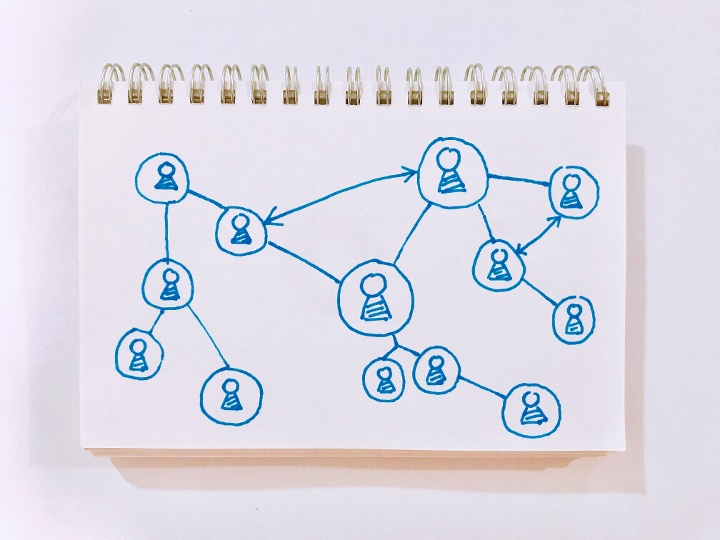All-in-One, Cloud-Based
Payroll & HR Software
Centralize employee management, from hire to retire, in one platform
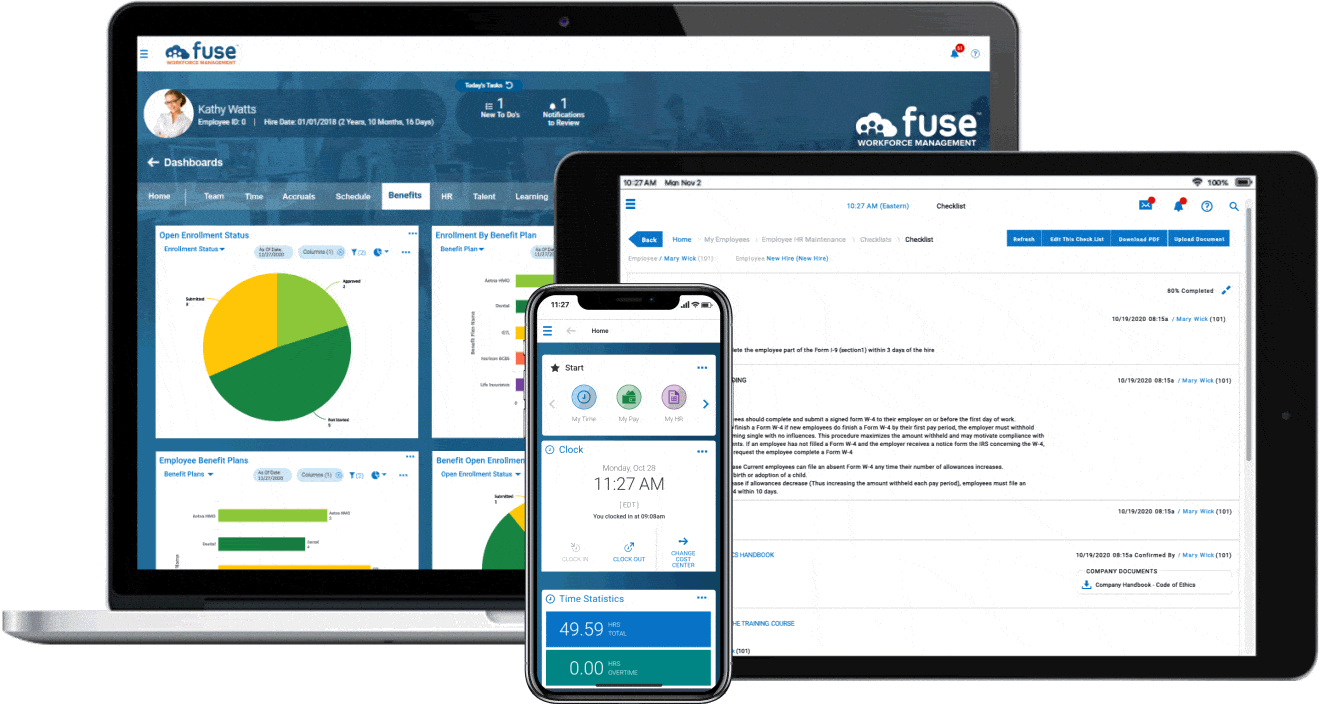
See Why HR and Payroll Teams Choose Fuse

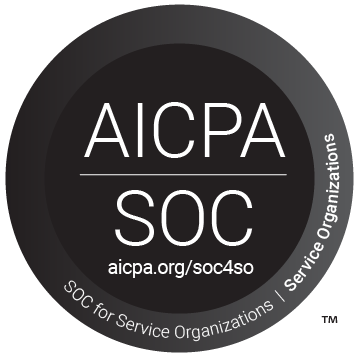
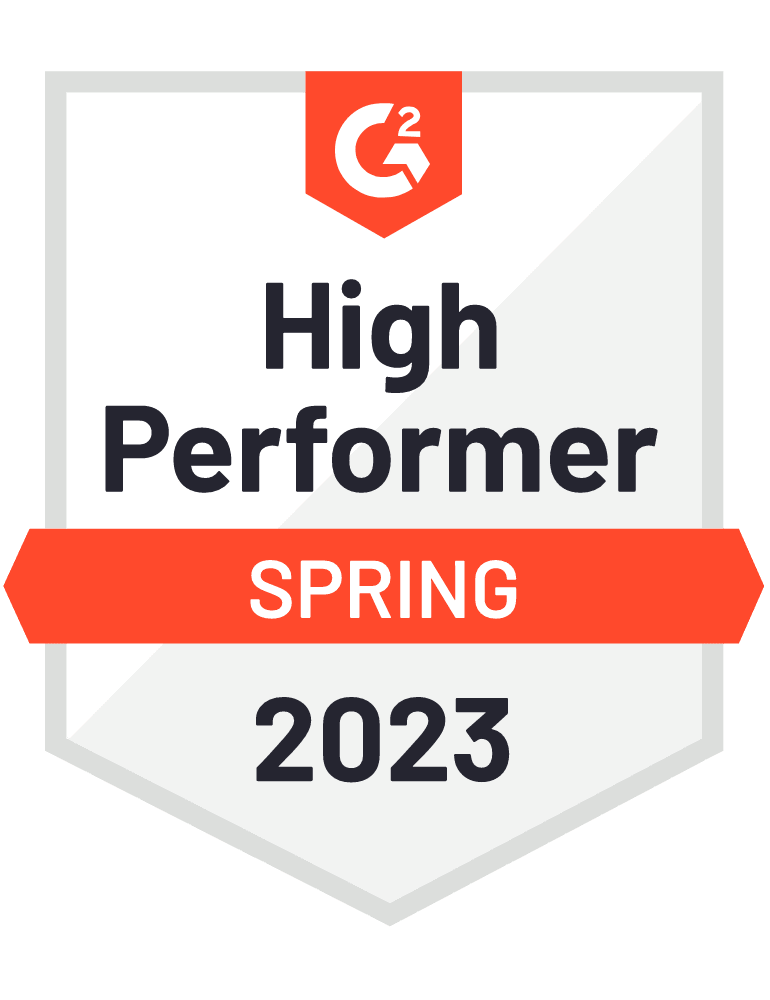
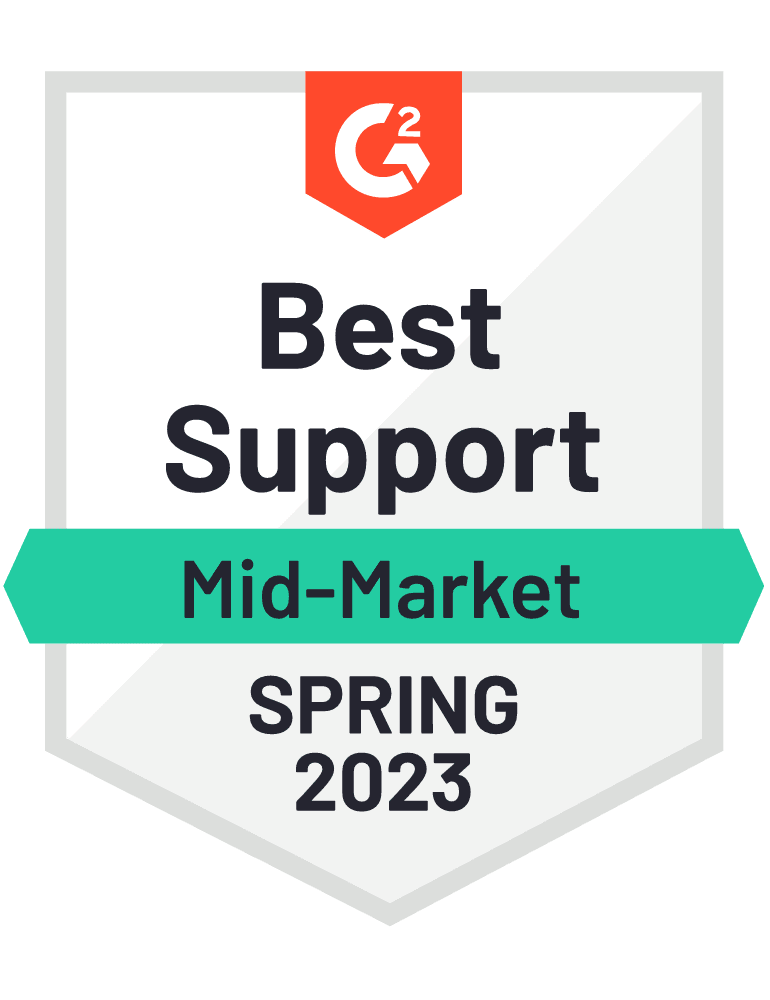
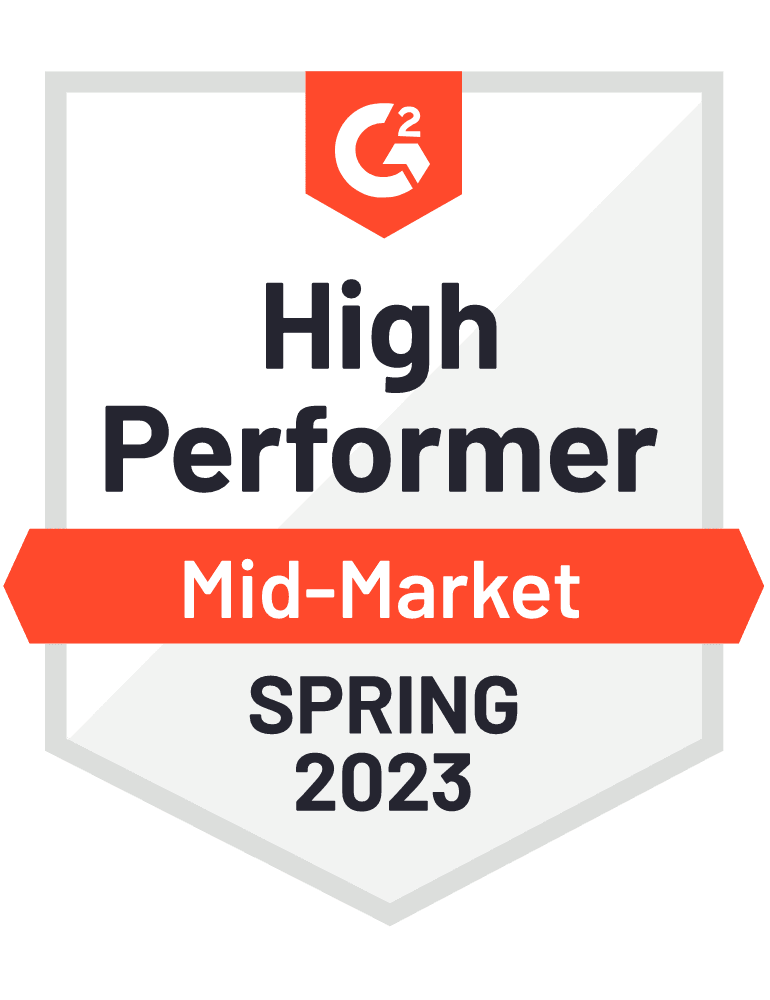
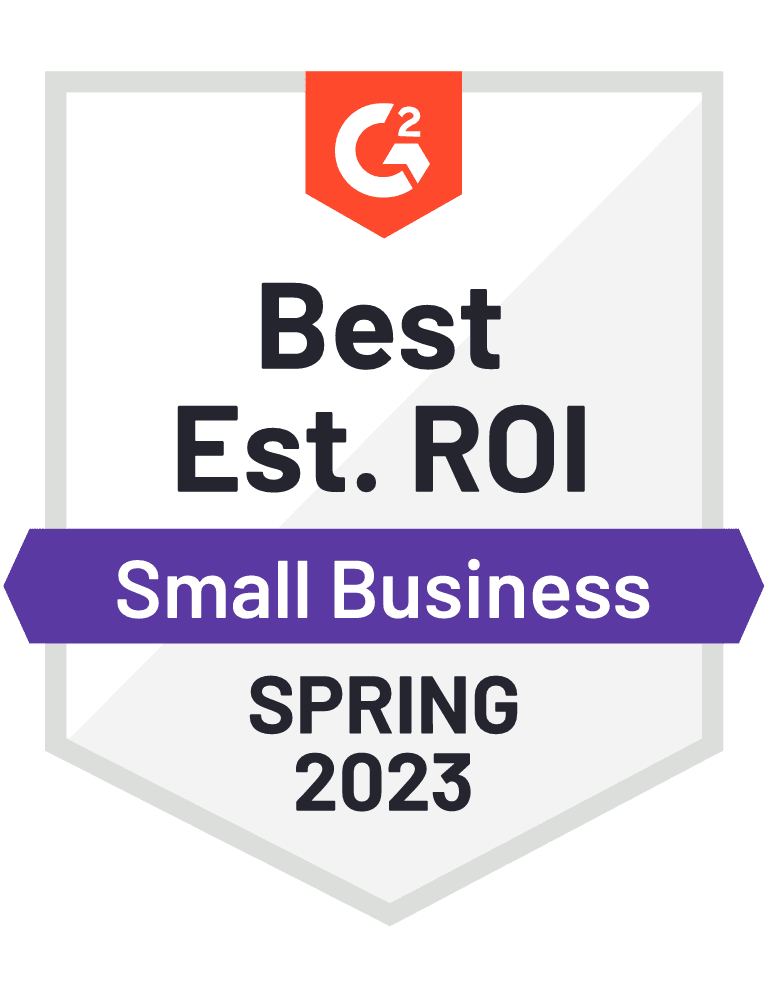
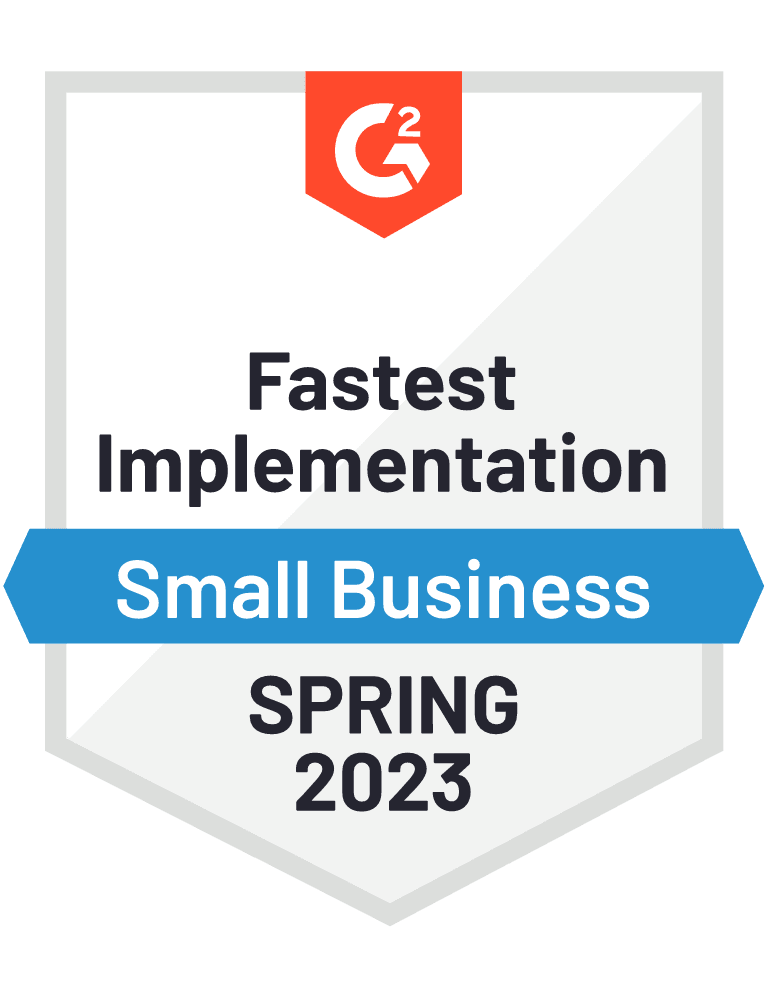

Sick of Hard-to-Use Tools That Don't Talk to Each Other?
The days of fragmented sources of truth and manual processes are over. Fuse unifies your employee management functions in one platform. Information is available when and where it's needed and is fully automated, based on rules you define.

Service and Support
Do you currently feel like just another number in a call center queue? When you call Fuse, you speak to someone who can help you. We work hard to support you through your implementation and continue that level of care when you're a Fuse customer.

The Employee Management Software You Deserve. Anywhere. Anytime.
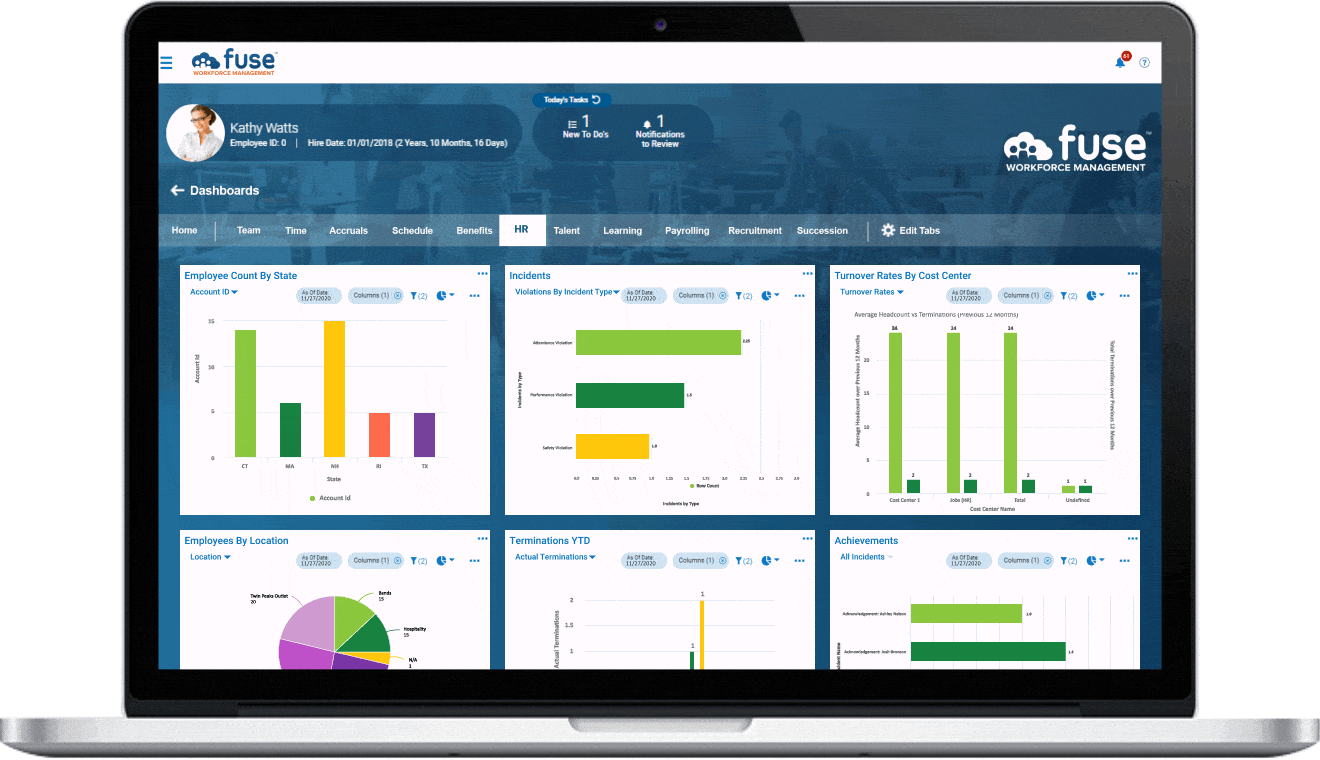
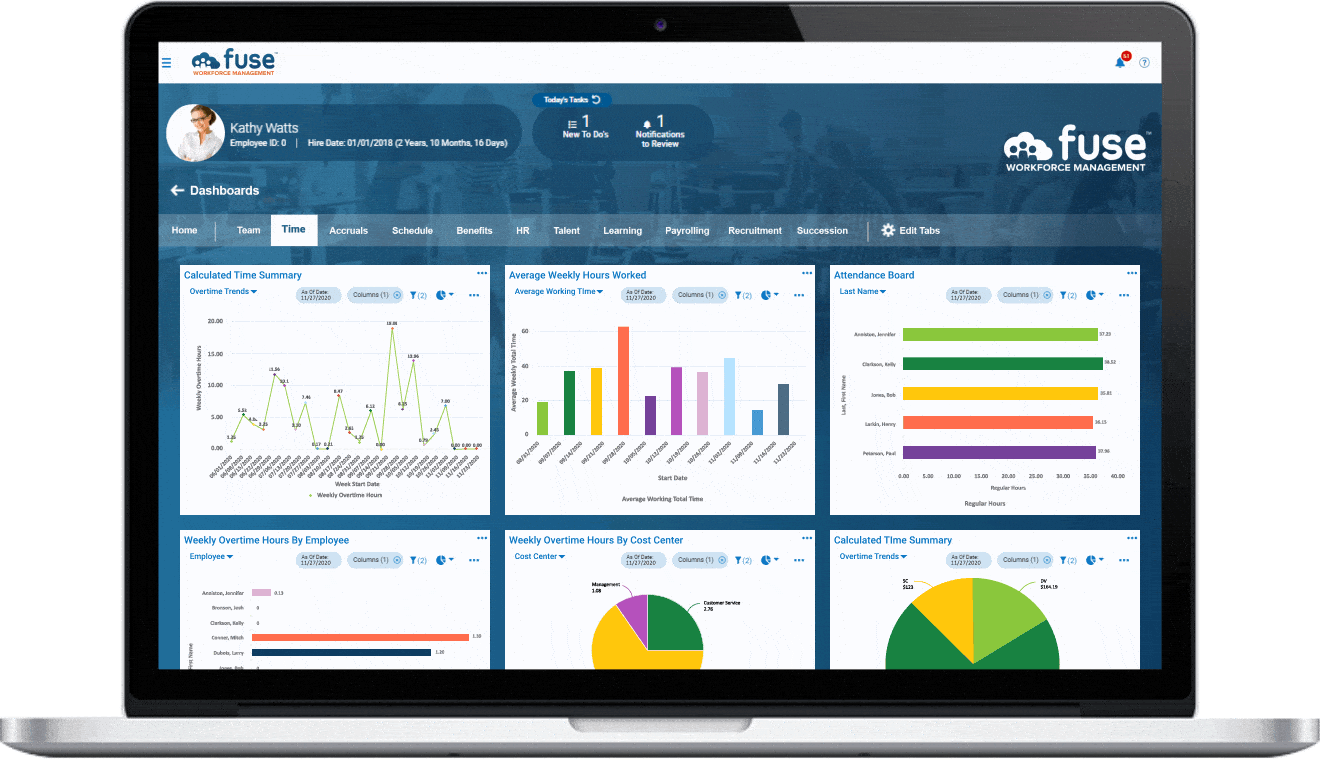
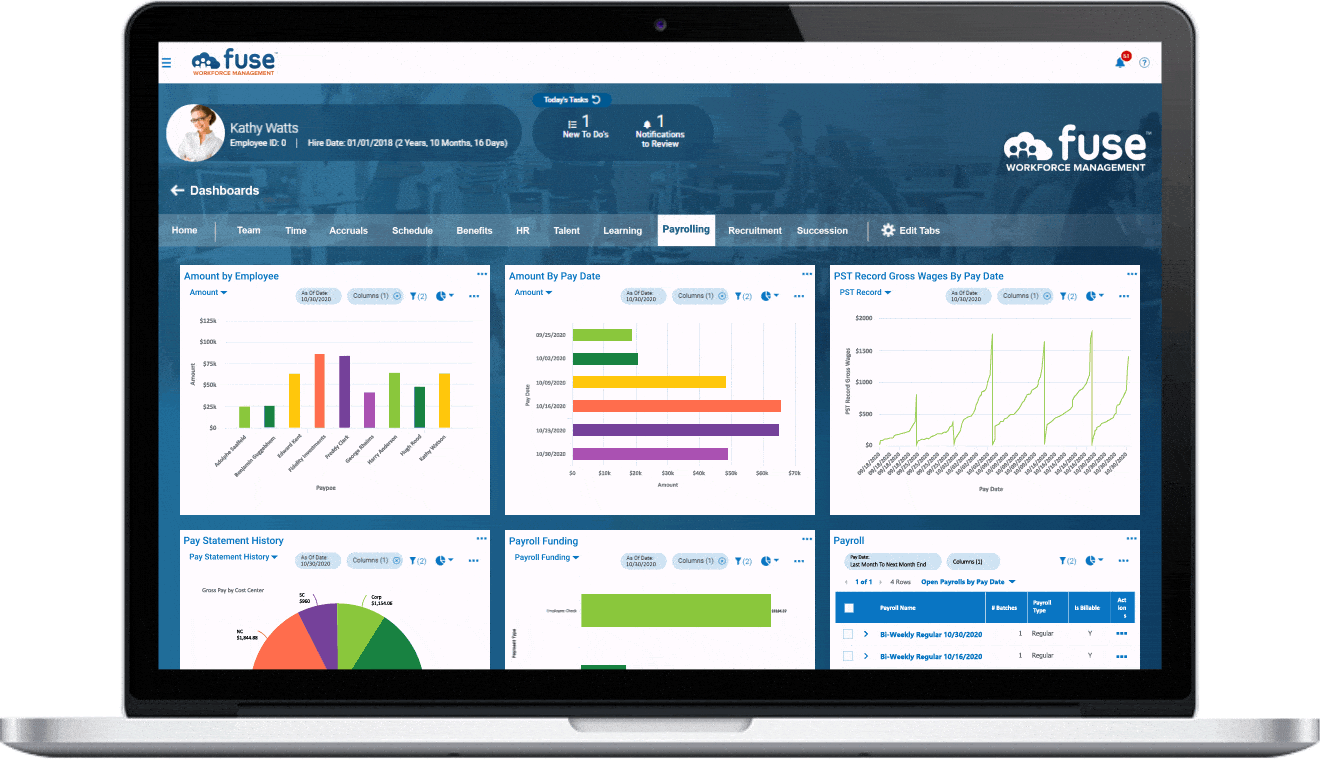


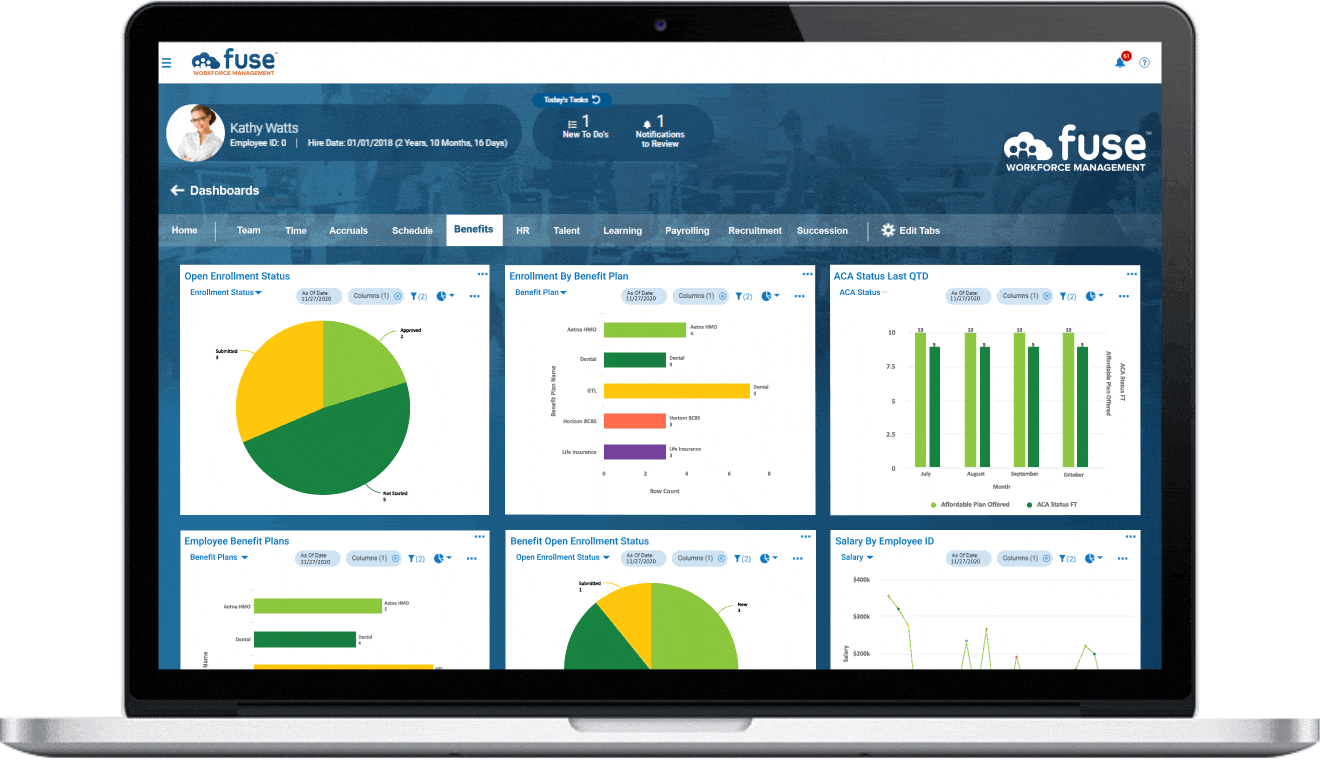
HR Tools to Build the Culture You Want
Enhance your workforce decision-making and reporting with our intuitive dashboards. Gain greater visibility into your workforce and assess the impact of HR programs. Run standard and custom reports and analyze trends to make better workforce data-driven decisions.
Improve Efficiency with Comprehensive Time and Attendance Management
Boost payroll accuracy with time and attendance tracking tools configured to your policies and pay rules. Manage overtime, work schedules, employee leave requests, and more.
Deliver a Perfect Paycheck With Our Integrated Payroll Solution
Drastically decrease payroll errors and ensure the accuracy of your payroll process every pay period. Keep your payroll activities in compliance with automated notifications about payroll and tax filing deadlines.
Automate Your Workforce Management
Say goodbye to spreadsheets and manual processes, and get time back in your day.
Streamline Your Applicant Tracking and Onboarding Process
Manage your talent pipeline for open positions and keep track of each candidate—from application to screening and selection. Use comprehensive onboarding tools to eliminate dual-entry and ensure an exceptional candidate and new employee experience.
Simplify Open Enrollment and Benefits Administration
Manage your benefits plans and costs with tools for tracking employee elections and qualifying events. Employee self-service tools help you run an efficient annual open enrollment process and keep employees informed about available benefit options.
With Fuse, You Can:
Analyze Data in Real-Time
Managing HR data in multiple systems creates inconsistencies, errors, and reporting delays. Organizing your workforce management into one integrated platform ensures accurate employee data throughout your system, allowing you to analyze data in real-time.
Configurable Platform
As your organization grows and evolves, your HRIS software should too. Configure the Fuse integrated platform to meet your needs for custom reporting, changing pay rules, annual compliance reporting, and much more.
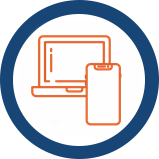
Accessible Benefits
Empower employees to access benefits information without constant HR intervention. Dynamic employee self-service tools allow employees to access benefits elections, find resources for open enrollment, and notify you about qualifying events.
Unlimited Access
Storing your workforce data in spreadsheets or legacy systems can compromise data integrity and create security issues. By maintaining your workforce management activities in the cloud, you keep sensitive data secure and enjoy 24/7 access from any location, whether your workforce is onsite or working remotely.
Fuse Automates Your Workforce Management Activities
Say goodbye to spreadsheets and manual processes, and get time back in your day for what matters most: running your business.
Does your current HCM software cost more than expected?
Our guide shares some of the most common mistakes companies make when buying HCM software.

Success Stories
"The team there has been AMAZING – patient, concise in their approach and instructions, and readily available. And as yesterday shows, proactive with issues that we did not foresee. I could not have gotten through the last month or so without their support. I have experience with many companies but the customer service we have received from you guys far surpasses any other."
Meg L., Human Resources, Fastmarkets RISI
"Fuse has a team like no other. They have answered all my questions in a very clear, timely and professional manner. They have walked me through the system and explained the diverse tools available. [...] They're very knowledgeable with their software. They have made the payroll portion of my duties very easy."
Maggie K., Business Administrator, Living Water Fellowship
Maggie K., Business Administrator, Living Water Fellowship
“Your company has really proven itself and amazingly enough stayed true to your word, unlike other payroll companies we have worked with in the past.”
"With Fuse, Time and Attendance and Payroll are integrated into one solution. With a minimal local software footprint (a small monitoring application for the time clocks) we were able to integrate our existing timeclock hardware with the Fuse system. The rest of the system is web-based and very powerful."
